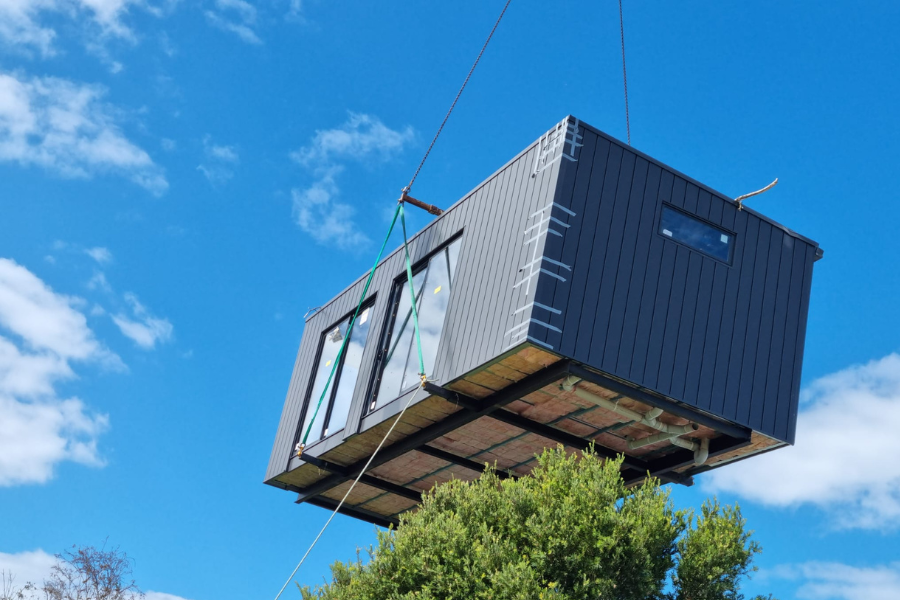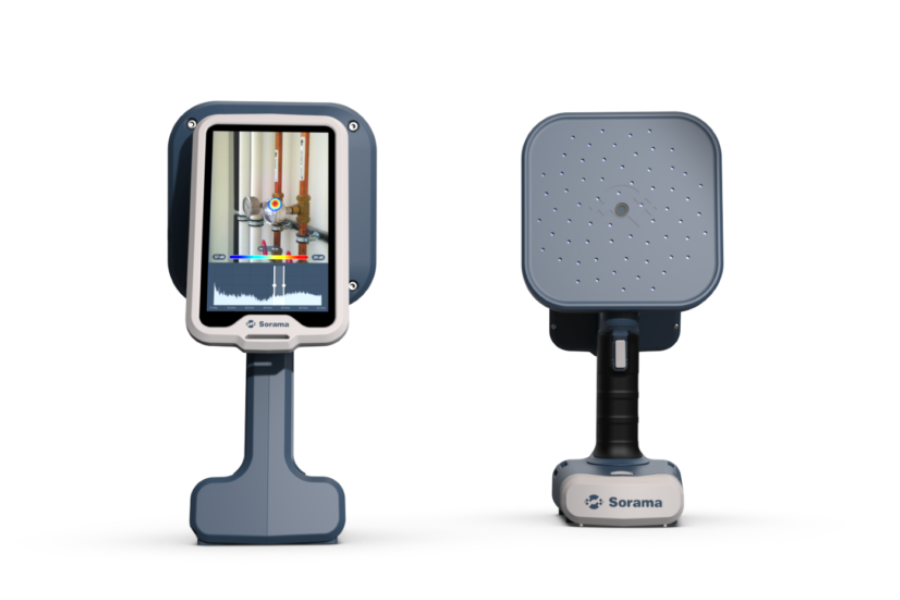Oct 18, 2024
Solar Thermal for These Old Houses: The Inflation Reduction Act’s Missed Opportunity
History has long shown that solar thermal works. The Inflation Reduction Act missed an opportunity by focusing on high-tech energy solutions to the exclusion of proven low-tech solar thermal tools.
By: Luther Krueger

The Inflation Reduction Act (IRA) missed an opportunity by focusing on high-tech energy solutions to the exclusion of proven low-tech solar thermal tools.1 The IRA aims to stimulate the economy while displacing fossil fuel use with photovoltaic (PV) electricity generation and high-capacity batteries. The IRA also promotes replacing gas-heating appliances with heat pumps. However, there are no incentives for proven solar thermal applications or solar collectors. Passive solar modifications have taken a back seat to fields of solar panels and rooftops with PV arrays.
I applaud the IRA’s goals. At my house, we’ve been on board with reducing fossil fuel use: Our rooftop solar panels are now in the payback period for their electricity generation. And we’re already seeing energy and cost savings from the heat pump we installed in April. While we haven’t found a battery system that sparks joy for us, we have stocked up on solar chargers to prepare for major power outages.
For those hoping for an even greener life in old houses around the country, nothing in the IRA encourages basic solar thermal applications. We and the nation are missing the boat by only high-teching our way out of what is a low-tech problem. The U.S. Census counted over 145 million housing units as of 2023. Panels, pumps, and power packs find their way into new and old construction alike, but we could reduce fossil fuel use even further by encouraging the rehabilitation of our homes to include solar thermal solutions.
The big problem we want to solve is fossil fuel use. Equally important is the quest to reduce unnecessary energy inputs of any kind. At our house, we conserve energy by closing furnace duct dampers to many of our rooms, drying clothes in the sun, etc. With our net metering arrangement in Minnesota, we’re still tied to the grid, so we’d also like to reduce our use of “dirty” grid electricity as well.
Solutions aren’t hard to find. I’ve seen a variety of solar thermal applications, used by tinkerers and passive solar architects, that could take a load off our heat pump’s shoulders. The construction of these devices is simple and inexpensive.
History has long shown that solar thermal works. “A Golden Thread,” a history of solar technology, describes early 1900s Florida and California, where rooftop solar water heaters were used until natural gas pipelines made their way past the Everglades and into Los Angeles.2
In my visits with dozens of people who walk the talk of grid-free and grid-as-backup-only philosophy, I’ve seen solar collectors, through-the-wall solar ovens, passive solar window heaters, and whole-package passive solar homes.
Susan Young, former director of Solid Waste and Recycling Services for Minneapolis, grew up in Rochester, New York, in an old home with a solar thermal heating retrofit. “Rochester is known for being cloudy, being right off Lake Ontario. We had a solar collector on a south-facing roof. Dad circulated water through it, tap water. An old hot water heater in the basement circulated water through this thing on the roof for baseboard heat. That also handled all of our showers.”
As Tony Denzer, author of “The Solar House: Pioneering Sustainable Design,” said, “No one likes the idea of plumbing on their roof. Air tightness is far more important, and so that’s the first thing to do if you have an old house — improve the envelope and maybe the windows, but definitely… improve insulation and air tightness. You could do passive solar first, but it’s just out of order. The Inflation Reduction Act appears to give states some wiggle room for rehab with insulation, but the primary incentive is for heat pumps, solar panels [and] batteries.”3
But who says the water heater has to be on the roof? Fellow solar cook Stan Wells’ solar hot water heater sits in a sunny clearing behind his cabin on a Sonoma Mountain ridge. “We have a collector for the cabin’s hot water system. With the solar hot water thermosiphon system lower than our cabin — you don’t want any downward run on your upward hot water feed. There’s a pump in each water container and a tube that connects the two outputs of the pumps together, so whichever pump runs runs the water from one into another.”4
Tommy Yates’s heater takes up minimal yard space on his rural Mower County, Minnesota farm and woolen mill property. “We have more hot water than we know what to do with. We use it for heating the house now, and showers, dishwasher, radiant floors — all that hot water. Never had a problem.”5
But would it be worthwhile to promote solar thermal on the massive scale that the IRA encourages?
The short answer is yes. Let’s consider just the 100,000+ houses in Minneapolis alone.6 They were built mostly before 1970 and designed with little consideration for solar anything. Homes built later may have more efficient envelopes, but apart from picture windows in great rooms, there’s still much that can be done to take advantage of the Sun’s free energy.
These collectors capture sunlight in enclosed compartments, which are closed up with glass and have their walls painted black. The sunlight is converted into heat. Some heated air naturally rises through the home from bottom to top. There are some heat pipes for hot water or radiant room heating systems. Many are passive systems, but can be “active” with a modest assist from fans or pumps.
Most buildings of any type appear to be fertile ground for solar thermal retrofits as much as for the solutions boosted by the IRA. You would be hard-pressed to find a manufactured solar air heater for sale, but they’re out there: Solar Brother, a maker of solar thermal cookers, also offers the SunAéro, a solar collector with a modest 32-watt PV-powered fan that can be installed room-by-room.7
Our 125-year-old house, with its longest side facing the equator and no tree canopy blocking our walls, could fit one of these for each of the seven rooms. Taller homes may not gain much through the passive solar strategy of low-winter-sun/high-summer-sun rooflines, but wherever sunlight can be captured, solar thermal equipment can be added.
I relearned this lesson from Tor Allen, who runs the Solar Schoolhouse in Sebastopol, California and is co-author of “Your Solar Home: The Art and Science of Heating, Cooling and Powering Your Home with the Sun.”8 He educates kids in solar energy. “In our curriculum for Your Solar Home, the idea is that your home is the ultimate solar collector.”
Mark Chalom’s Santa Fe, New Mexico passive solar home, which he built himself, is a beautiful example. I met him two years ago to talk about solar cooking, but as I walked through his luxuriously green sunroom, he said, “This is my furnace. The wall is made of split-face concrete block. The texture increases the surface area of the block, so it makes it more efficient. We have thermal air moving up and down the wall. This is almost the lowest part of the house, but all the heat rises.”9
Just south of Santa Fe, New Mexico, Amanda and Andy Bramble run the Ampersand Sustainable Learning Center. Not only are they off the electric grid, but their remote center has a surplus of water caught from the rain from several roofs across their campus. Built into an earth berm, the home could qualify as an earthship. They revel in the simplicity of a no-moving-parts system.
“We have an earth floor, earth plasters, and it’s very passive solar. We don’t need to heat this with anything other than sun. Because it’s embedded in the earth, it taps into the Earth’s ambient temperature. It’s been -20°F outside once and it did not really get below 50°F inside. We throw on sweaters rather than burn some fuel.”10
We can’t afford to build from scratch, and to amass an earth berm around our urban home would mean encroaching on our neighbor’s property. Even so, many homeowners in older cities have examples to follow from existing traditional-style homes that have been outfitted with solar thermal devices and appliances.
To be sure, the biggest bang for your energy-saving buck remains proper insulation to retain heat. But simple solar collectors can add heat, rather than just keep what heat you’re already generating with fossil fuels.
Even do-it-yourselfers find ways to implement incremental solar thermal gains.
So yes, solar thermal can help a fixer-upper like ours reduce fossil fuel energy use. Incremental savings from solar thermal retrofits can multiply when applied in tandem with updated electric appliances the IRA supports. The scant mention of solar thermal in the law means a huge opportunity has been missed.
Detail devils pop up. The markets for add-on solar collector room heaters and innovative solar water heaters are “new again” and may face regulatory hurdles. But the heaters work. We just need to make them work on paper for the powers that be, and produce them at scale like any other appliance to make them affordable.
It would be prudent to make solar thermal a bigger part of the energy transition through the next edition of the IRA. Let’s lobby to update the law to go beyond panels, pumps and power-packs. Let’s give equal time for solar thermal power.
Sources
- https://tinyurl.com/InflRedux
- https://tinyurl.com/GldThrd
- https://tinyurl.com/ypcc45kk
- https://tinyurl.com/2s9xzmrj
- https://tinyurl.com/48y2r58h
- https://tinyurl.com/56tyebpe
- https://tinyurl.com/AroSun
- https://tinyurl.com/SolarSchlHs
- https://tinyurl.com/377febsu
- https://tinyurl.com/ykse57vz
This article was originally published in Solar Today magazine and is republished with permission.





